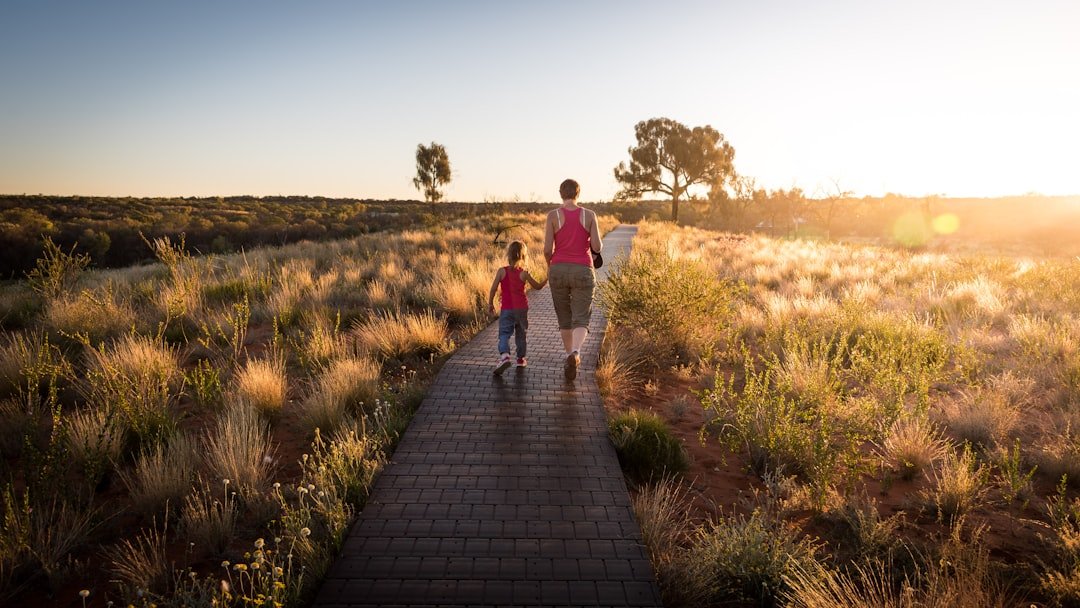Digital Detox for Your Child: Reconnect with Nature through Shinrin-Yoku (Forest Bathing)
In today’s tech-saturated world, children are often glued to screens, whether it’s for entertainment, education, or even social interactions. While technology has its benefits, excessive screen time can take a toll on a child’s mental and physical well-being. One powerful way to counterbalance the impact of the digital world is through Shinrin-Yoku, or forest bathing,” practice popularized in Japan that’s now gaining recognition worldwide for its incredible restorative benefits.
What is Shinrin-Yoku (Forest Bathing)?
Shinrin-Yoku translates to “taking in the forest atmosphere.” It involves immersing oneself in nature, usually a forest, with the goal of connecting deeply with the environment. Unlike a traditional hike, Shinrin-Yoku is less about physical exercise and more about mindful presence — using all five senses to appreciate the sights, sounds, and smells around you. For children, it’s an ideal way to experience a digital detox that’s refreshing, engaging, and naturally therapeutic.
Why Shinrin-Yoku is Perfect for Kids
Children are naturally curious and love to explore, and Shinrin-Yoku encourages them to slow down and engage fully with their surroundings. The practice doesn’t require any special equipment or structured activity. Instead, kids are invited to simply walk, sit, or observe in a natural setting — an ideal antidote to overstimulation from screens and structured activities.
The Science-Backed Benefits of Nature Exposure for Kids
Scientific research supports the benefits of nature exposure on both adults and children. Time in nature is shown to:
– Boost Mood and Self-Esteem: Time spent outdoors improves emotional resilience, giving kids a natural mood boost.
– Reduce Anxiety and Stress: The natural sounds, smells, and sights have a calming effect on the nervous system, reducing stress levels.
– Enhance Cognitive Focus and Creativity: Studies have shown that time in green spaces can improve focus, attention, and problem-solving abilities.
– Improve Physical Health: Natural environments encourage physical movement and boost immunity.
– Promote Better Sleep: Outdoor time helps regulate sleep patterns, a critical aspect of children’s growth and development.
The Power of Forest Air
One of the unique aspects of Shinrin-Yoku is breathing in the “forest air,” which is rich in phytoncides — natural compounds emitted by trees and plants that are believed to boost immune function. When children inhale these compounds, it may help strengthen their immune systems, potentially making them less susceptible to illness.
Tips for Parents: How to Introduce Your Child to Shinrin-Yoku
Here’s how you can bring Shinrin-Yoku into your child’s life, regardless of where you live.
1. Find a Nearby Green Space
You don’t need a dense forest to experience the benefits of Shinrin-Yoku. Parks, nature trails, or even a backyard with trees can serve as a forest-bathing spot. Ideally, choose a location that’s quiet and has a good amount of greenery. If you live in an urban area, try to visit botanical gardens, arboretums, or nature reserves where you can get closer to the natural elements.
Parenting Tip: Make it a weekend ritual to explore different green spaces. Variety will keep the experience fresh and exciting for your child.
2. Slow Down and Be Mindful
Unlike a regular walk, forest bathing is all about moving slowly and letting go of any agenda. Encourage your child to pay attention to small details — the texture of a tree bark, the sounds of rustling leaves, or the patterns on a rock. If your child is young, you can make it a game: who can spot the smallest insect or identify the most colors in the forest?
Parenting Tip: Remind your child to walk slowly, take deep breaths, and observe. This mindful pace can help them relax and become absorbed in their surroundings.
3. Engage All Five Senses
Shinrin-Yoku is about fully immersing in the sensory experience of nature. Here’s how you can guide your child to engage all five senses:
– Sight: Notice colors, light patterns, and shapes. Point out unique plants, flowers, or wildlife.
– Sound: Listen to bird songs, flowing water, or the crunch of leaves. Have your child close their eyes and identify different sounds.
– Touch: Feel the textures of leaves, rocks, and soil. Barefoot walking on grass can also be a grounding experience for children.
– Smell: Encourage them to smell flowers, leaves, or the earthy aroma of soil.
– Taste: If it’s safe, you can introduce wild herbs or fruits (like blackberries or mint) that grow in your area. Be cautious and identify any plant before allowing them to taste.
4. Encourage Curiosity and Exploration
Children are naturally curious, so let them lead the way and explore at their own pace. Bring a magnifying glass or binoculars to help them observe things more closely. Let them pick up stones, look for bugs, or collect fallen leaves.
Parenting Tip: Let your child bring a nature journal to sketch, write, or collect their thoughts about what they see. It’s a great way to extend the experience and promote creativity.
5. Practice Deep Breathing Exercises
The practice of forest bathing incorporates mindful breathing, which can help calm both the body and mind. Guide your child in simple breathing exercises, like taking deep breaths in through the nose, holding for a count, and slowly exhaling. This helps them slow down and tune in to the peaceful surroundings.
Parenting Tip: Try a “smell the flowers, blow out the candle” exercise. It’s a simple way for kids to understand deep breathing — breathe in slowly as if smelling a flower, then exhale as if blowing out a candle.
6. Leave Devices Behind
Forest bathing is meant to be a screen-free activity. Make a family agreement to leave phones and devices in the car or at home. For young children, explain that the forest has its own form of “magic” that they can only fully experience without screens.
Parenting Tip: If your child is used to having a screen with them, consider easing into this by starting with short, device-free outings. Over time, it will become more natural.
Making Shinrin-Yoku a Part of Family Life
Consistency is key when introducing children to new activities. Make Shinrin-Yoku a regular part of your family’s routine to maximize its benefits.
1. Plan Weekly or Monthly Forest Bathing Outings
Start by scheduling time each week or month for a family forest bathing outing. This could be a weekend morning or an after-school adventure. Regular exposure to nature will reinforce the positive effects, helping your child develop a deeper connection with the natural world.
2. Create a Nature-Centered Routine
Incorporate nature into your child’s everyday life by adding a small green ritual, like spending time in the garden or taking an evening stroll through the park. Even adding plants indoors or displaying natural elements like stones or pine cones can create a small “nature sanctuary” in your home.
3. Keep It Fun and Engaging
For children, forest bathing can be like a treasure hunt. Encourage them to look for animal tracks, identify plants, or spot different types of leaves. This playfulness can make nature time feel like an adventure rather than a chore.
4. Practice Gratitude Together
At the end of each forest-bathing session, take a moment as a family to express gratitude for something you saw, heard, or felt. This ritual not only strengthens the family bond but also nurtures a sense of appreciation and mindfulness in your child.
Forest Bathing as a Pathway to Digital Balance
By incorporating Shinrin-Yoku into your child’s routine, you’re not only helping them to “unplug” from digital distractions but also giving them a chance to foster a deep appreciation for the natural world. Forest bathing offers children a unique opportunity to experience calm, explore with curiosity, and develop resilience in a world where the digital often overshadows the natural.
In a time when many kids are overwhelmed by screens and artificial stimuli, nature offers an irreplaceable source of balance and joy. Embrace Shinrin-Yoku as a family, and watch your child blossom in ways that no screen time can replicate.













LEAVE A COMMENT